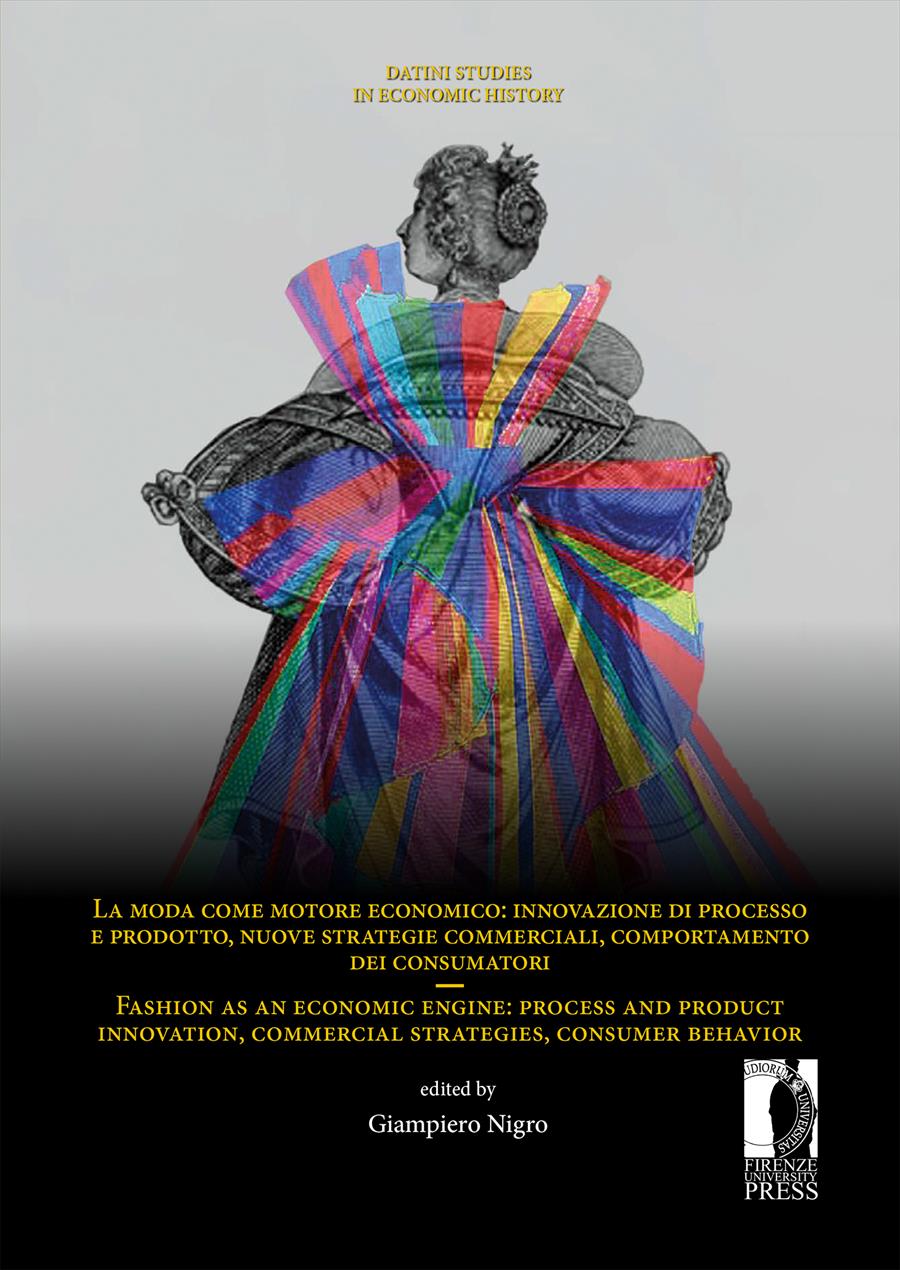Tavola rotonda
- Salvatore Ciriacono
- © 2022 Author(s) |
- CC BY 4.0
- DOI: 10.36253/978-88-5518-565-3.22
Although the LII Week adequately developed the theme of Fashion in its economic, productive and technological aspects, not forgetting the expectations of consumers and the role of raw materials available over the centuries considered, other aspects of this complex issue inevitably remained on the sidelines, which refers to questions of a sociological, linguistic, psychological and even psychoanalytic nature. It would have been equally appropriate to compare, in a more direct way, what was happening in northern Europe with respect to Mediterranean Europe, bearing in mind the role of Protestantism, very far from clothing that was too flashy. The role of colors and themes, also of an artistic nature, that transpired from clothing also refer to other aspects that will have to be taken up on other occasions.
- Keywords:
- Economic history,
- fashion,
- textile history,
- preindustrial economy,
University of Padua, Italy - ORCID: 0000-0002-2655-8817
- Belfanti, Carlo Marco. 2008. Civiltà della moda. Bologna: Il Mulino
- Blanc, Odile. 2004. “The historiography of costume: a brief survey.” In Ottoman costumes: from textile to identity, a cura di Suraya Faroqhi, and Christoph K. Neumann, 56-59. Istanbul: Eren.
- Bourdieu, Pierre. 1979. La distinction. Critique sociale du jugement. Paris: Éditions de Minuit.
- Ciriacono, Salvatore. 1981. “Silk manufacturing in France and Italy in the XVIIth century: two models compared.” The Journal of European Economic History X: 167-199.
- Ciriacono, Salvatore. 2017. Luxury production and technological transfer in Early Modern Europe. Leipzig: Universitätsverlag.
- Flügel, John Carl. (1930) 1992. Psicologia dell’abbigliamento. Introduzione di G. Tibaldi. Milano: FrancoAngeli
- Kovesi, Catherine. 2015. “What is luxury? The rebirth of a concept in the Early Modern world.” In Luxury, history, culture, consumption. 25-40. DOI: 10.1080/20511817.2015.11428563
- Poni, Carlo. 1993. “Moda e innovazione: le strategie dei mercanti di seta in Lione nel secolo XVIII.” La seta in Europa. Secc. XIII-XX, a cura di Simonetta Cavaciocchi, 17-55. Firenze: Le Monnier.
- Simmel, Georg. (1905) 1995. Philosophie der Mode, a cura di Michael Behr, Volkhard Krech, e Gert Schmidt. Frankfurt am Main: Suhrkamp.
Chapter Information
Chapter Title
Tavola rotonda
Authors
Salvatore Ciriacono
Language
Italian
DOI
10.36253/978-88-5518-565-3.22
Peer Reviewed
Publication Year
2022
Copyright Information
© 2022 Author(s)
Content License
Metadata License
Bibliographic Information
Book Title
La moda come motore economico: innovazione di processo e prodotto, nuove strategie commerciali, comportamento dei consumatori / Fashion as an economic engine: process and product innovation, commercial strategies, consumer behavior
Editors
Giampiero Nigro
Peer Reviewed
Number of Pages
422
Publication Year
2022
Copyright Information
© 2022 Author(s)
Content License
Metadata License
Publisher Name
Firenze University Press
DOI
10.36253/978-88-5518-565-3
ISBN Print
978-88-5518-564-6
eISBN (pdf)
978-88-5518-565-3
eISBN (xml)
978-88-5518-566-0
Series Title
Datini Studies in Economic History
Series ISSN
2975-1241
Series E-ISSN
2975-1195
